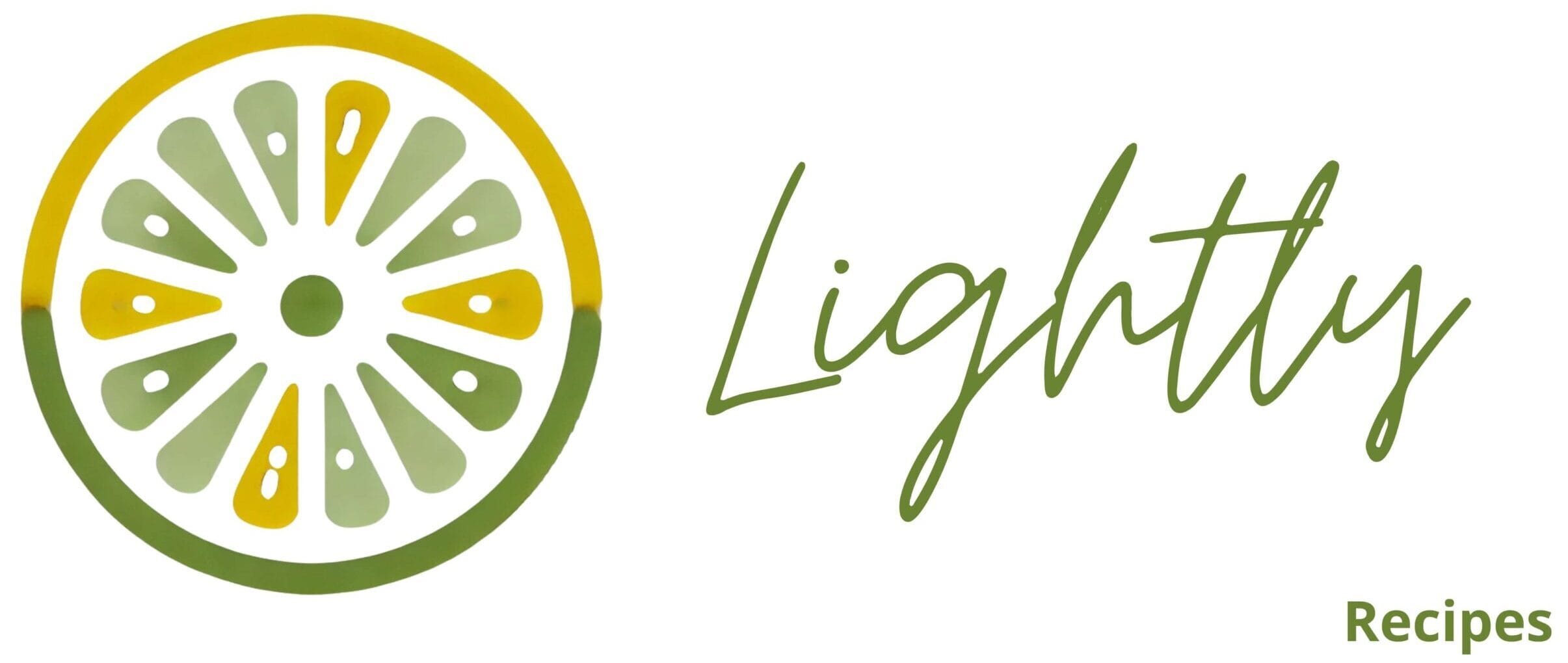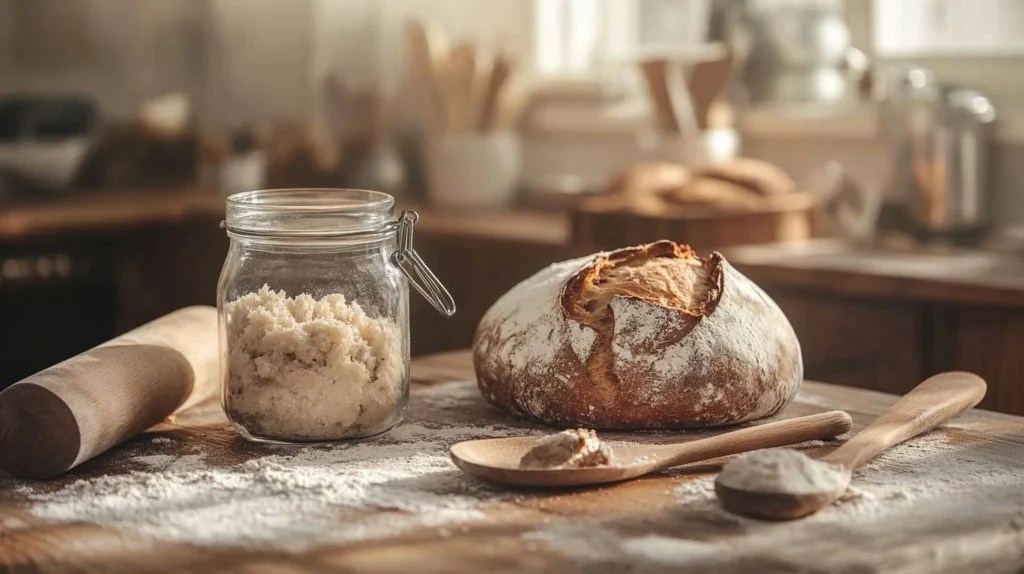
Sourdough baking has taken kitchens by storm, but what about the leftover discard? Many bakers wonder, “Is sourdough discard still good?” 🤔 Spoiler alert—yes, it often is! Instead of tossing it, you can transform this humble leftover into delicious treats, save money, and even reduce food waste. 🌎
In this guide, we’ll explore what sourdough discard is, how to store it, creative recipes, and troubleshooting tips to keep it fresh and tasty. Ready? Let’s dive in!
What Is Leftover Sourdough Starter? Understanding the Basics
What Is the Purpose of Sourdough Discard?
Sourdough discard is the portion of sourdough starter that you remove before feeding the remaining mixture. Think of it as trimming the excess to keep your starter healthy and manageable.
“Sourdough discard is like pruning a plant—it keeps your starter alive and thriving.” 🌱
Discard doesn’t have the strength to make bread rise, but it still contains fermented flour and water. And guess what? That’s a goldmine for flavor and texture! 😋
How Does Leftover Starter Differ from an Active Starter?
The main difference lies in activity.
| Feature | Active Starter | Sourdough Discard |
|---|---|---|
| Bubbles/Fermentation | Very bubbly, full of live yeast | Less active, fewer bubbles |
| Purpose | Used for baking bread that needs a rise | Used for recipes that don’t need rising |
| Storage | Regular feeding required | Can be stored for longer without feeding |
In short, discard is a sidekick—not the superhero—but it still plays a vital role in your baking adventures!
Is Sourdough Discard Still Good? Key Signs to Check
How to Tell If Sourdough Discard Has Gone Bad?
Not sure if your leftover starter is still usable? Here’s how to check:
- Smell Test – A slightly tangy smell is normal. But if it smells rotten, like spoiled milk or vinegar, toss it out. 👃
- Visual Inspection – Look for pink, orange, or fuzzy mold. If you see any, don’t risk it.
- Texture – If it’s super watery or slimy, it may have separated. Stir it to check consistency—thick is good.
Pro Tip: A harmless liquid called “hooch” may form on top. Just stir it back in, and you’re good to go! 🥄
Does Leftover Sourdough Starter Go Bad Over Time?
Yes, sourdough discard can go bad if not stored properly. Typically:
- Room Temperature: Use within 12–24 hours.
- Refrigerator: Stays fresh for 1–2 weeks.
- Freezer: Lasts up to 6 months if sealed well. 🧊
Fun Fact: Old discard might taste more sour, which can add an extra flavor punch to recipes like pancakes and crackers! 🥞
Top 10 Creative Ways to Use Sourdough Discard
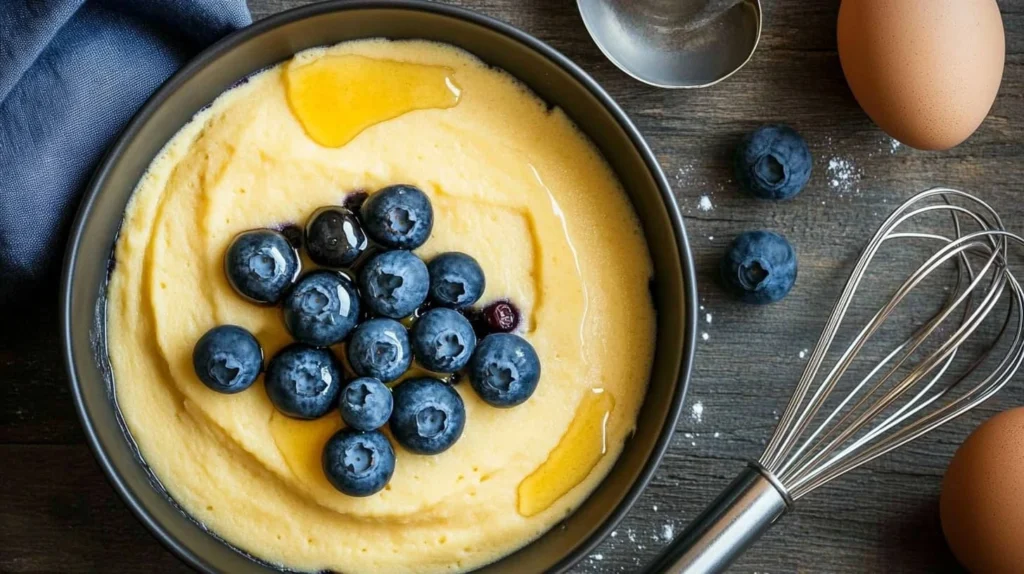
Throwing away discard feels wasteful, doesn’t it? Good news—you can turn it into mouthwatering dishes. Here are 10 genius ideas:
- Pancakes and Waffles – Fluffy, tangy, and utterly delicious. Perfect for using leftover sourdough starter on lazy Sunday mornings. 🌞
- Muffins and Quick Breads – Adds moisture and flavor to baked goods. 🍌
- Crackers and Flatbreads – Crispy, savory, and perfect with dips. 🥖
- Pizza Dough – Makes thin, chewy crusts with a sour kick. 🍕
- Biscuits and Scones – Ideal for breakfast or teatime snacks. ☕
- Brownies and Cakes – Adds depth without overpowering sweetness. 🍫
- Pasta Dough – Homemade pasta with a hint of tangy goodness. 🍝
- Fried Snacks – Make fritters or onion rings with extra crispiness. 🍟
- Thickening Agent – Use it in soups, stews, or gravies for added texture. 🍲
- Fermented Snacks – Try making fermented crackers or tortillas for gut health. 🌿
“Sourdough discard isn’t trash—it’s treasure waiting to be discovered!” 💎
Storing Sourdough Discard Properly: Best Practices
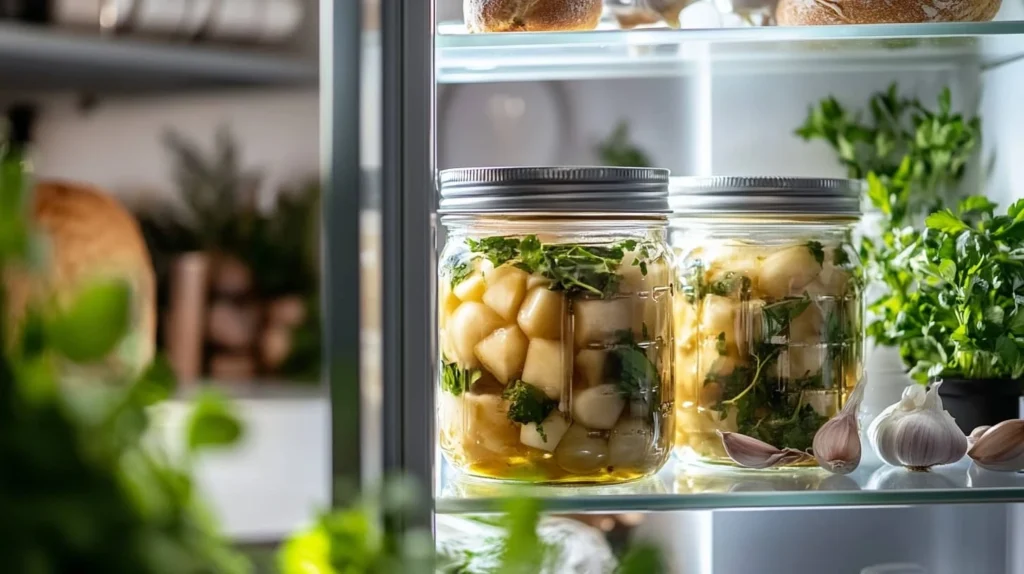
Refrigeration vs. Freezing: Which Is Better?
Wondering where to store your leftover starter? It depends on how soon you plan to use it:
- Refrigeration – Perfect for short-term storage. Just keep it in an airtight jar, and it’ll last 1–2 weeks.
- Freezing – Ideal for long-term storage. Divide it into portions and freeze in silicone molds for easy use.
How Long Can Leftover Starter Be Stored?
| Storage Method | Shelf Life |
|---|---|
| Room Temperature | 12–24 hours |
| Refrigerator | 1–2 weeks |
| Freezer | Up to 6 months |
Tips to Prevent Spoilage and Maintain Freshness
- Label Your Jar – Always mark the date to track freshness. 🗓️
- Stir Regularly – Keeps hooch from forming and prevents spoilage. 🥄
- Seal Tight – Airtight lids prevent contamination. 🔒
- Use Glass Jars – Avoid plastic, which can harbor bacteria.
Benefits of Using Sourdough Discard: Nutritional and Environmental Impact
Is Sourdough Discard Healthy to Consume?
Absolutely! Sourdough discard is packed with nutrients:
| Nutrient | Amount (per 100g) |
|---|---|
| Protein | 4–5g |
| Fiber | 2–3g |
| Probiotics | Present in small amounts |
| Vitamins B1, B6 | Moderate |
Because it’s fermented, it’s easier to digest and may promote gut health. Plus, it has fewer anti-nutrients than regular flour. 🌾
Reducing Food Waste with Leftover Starter Mixture
Using discard means fewer scraps end up in the trash, which is a win for the planet! 🌎 By repurposing it, you’re contributing to sustainability—and getting yummy snacks in the process.
Common Problems with Sourdough Discard and How to Fix Them
Let’s face it—sourdough discard doesn’t always behave the way we expect. If you’ve run into issues, don’t worry. Here’s how to fix them.
What to Do If Discard Smells Bad?
A tangy, slightly sour smell? That’s normal. But a funky, rotten odor? 🚩 That’s a problem.
Possible Causes:
- Over-fermentation due to heat or long storage.
- Contamination from dirty jars or utensils.
Fix:
- Stir in a small amount of flour and water to refresh the discard.
- Store it in the fridge or freezer to slow fermentation.
- Clean containers thoroughly before use.
“A bad smell is like a red flag—trust your nose and act fast!” 👃
Dealing with Mold or Unusual Colors in Discard
Signs of Spoilage:
- Green, blue, or pink spots (mold).
- Orange streaks or discoloration.
- Fuzzy growth on the surface.
Solution:
- Unfortunately, mold means it’s time to toss it. 🗑️
- Never scrape off the mold—spores may have spread deeper.
- Always use clean, airtight containers to avoid contamination.
“When in doubt, throw it out. Your health is more important!” 🙌
Can You Bring Back Old or Neglected Sourdough Starter?
If your discard has been sitting for weeks (or months), you might be able to bring it back to life.
Steps to Revive:
- Stir out any liquid hooch and discard about half of it.
- Add equal parts flour and water to “feed” it.
- Let it sit at room temperature for 12–24 hours.
Warning: If it smells off or shows mold, don’t risk it—start fresh.
“Sourdough discard isn’t a lost cause—sometimes it just needs a little love!” 💕
Can You Feed Sourdough Discard to Restart a Starter?
Surprisingly, yes! Even old discard can be transformed back into an active starter.
Turning Discard Back Into an Active Starter
- Feed It Like a Baby – Add 1 cup flour and ½ cup water. Stir well. 🍼
- Warm Environment – Keep it in a warm place (70–75°F). 🌡️
- Wait for Bubbles – It may take 1–2 days to see activity.
- Repeat Feeding – Continue feeding every 12 hours until it doubles in size.
Does Older Discard Affect Fermentation Quality?
Older discard can be more acidic, which may slow down fermentation. It’s better for recipes that don’t rely on rising, like pancakes and crackers.
“Think of sourdough discard as a sleeping starter—sometimes it just needs waking up!” ⏰
Gluten-Free and Vegan Options for Sourdough Discard Recipes
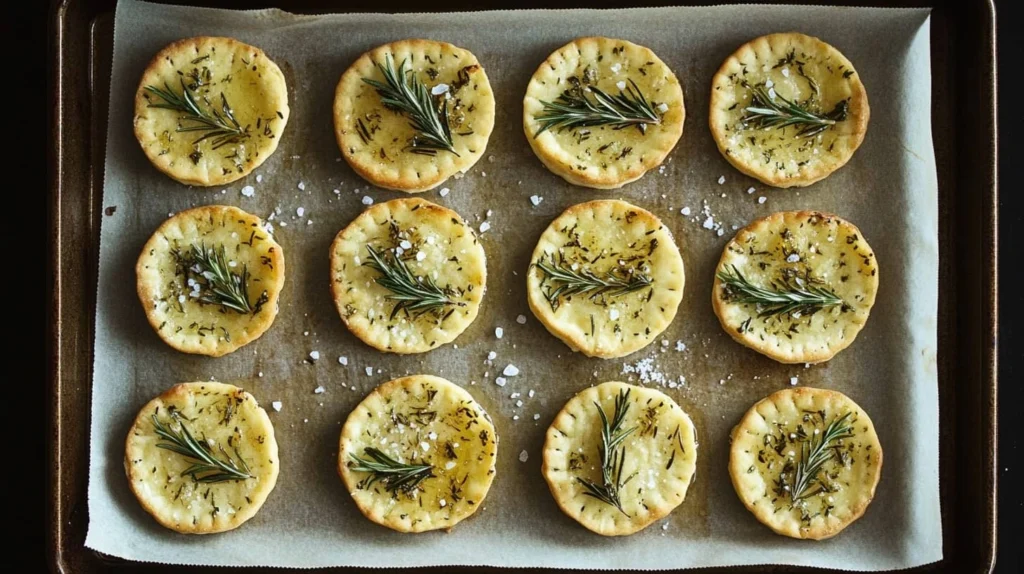
Not a fan of gluten or dairy? No problem! Here are recipes that fit various diets. 🌱
Gluten-Free Sourdough Discard Baking Ideas
Recipe: Gluten-Free Sourdough Pancakes 🥞
Ingredients:
| Ingredient | Quantity |
|---|---|
| Gluten-Free Flour Mix | 1 cup |
| Sourdough Discard | 1 cup |
| Baking Soda | 1 tsp |
| Almond Milk | ¾ cup |
| Maple Syrup | 2 tbsp |
| Egg (optional) | 1 |
| Vanilla Extract | 1 tsp |
Instructions:
- Mix all ingredients until smooth.
- Heat a non-stick pan over medium heat.
- Pour batter and cook until bubbles form. Flip and cook the other side.
- Serve with syrup, fruits, or nuts!
Nutritional Facts (Per Serving):
| Nutrient | Amount |
|---|---|
| Calories | 180 |
| Protein | 4g |
| Fiber | 3g |
| Sugar | 5g |
“Who said gluten-free can’t be delicious? These pancakes will prove them wrong!” 😋
Vegan-Friendly Recipes with Sourdough Discard
Recipe: Vegan Sourdough Crackers 🥖
Ingredients:
| Ingredient | Quantity |
|---|---|
| Sourdough Discard | 1 cup |
| Olive Oil | 2 tbsp |
| Whole Wheat Flour | ½ cup |
| Garlic Powder | 1 tsp |
| Rosemary (optional) | 1 tsp |
| Sea Salt | ½ tsp |
Instructions:
- Preheat oven to 350°F (175°C).
- Mix all ingredients into a smooth dough.
- Roll thinly and cut into squares.
- Bake for 12–15 minutes until golden.
Nutritional Facts (Per Serving):
| Nutrient | Amount |
|---|---|
| Calories | 120 |
| Protein | 3g |
| Fiber | 2g |
| Fat | 6g |
“Crispy, vegan, and perfect for dipping—these crackers are a must-try!” 🌿
Tips for Enhancing Flavor When Cooking with Sourdough Discard
Flavor is everything, right? Here’s how to level up your sourdough recipes:
- Spices and Herbs – Add garlic, rosemary, or chili flakes for extra zing. 🌶️
- Sweeteners – Honey or maple syrup balances sour notes beautifully. 🍯
- Fermentation Tricks – Let the batter sit longer for deeper flavors.
“Cooking with sourdough discard is like seasoning your food—it’s all about balance and creativity!” 🎨
Environmental Impact of Sourdough Discard: Sustainable Practices
Composting Sourdough Discard: Is It Safe?
Ever wondered if you can compost sourdough discard? Good news—you absolutely can! 🌱
Sourdough discard is organic and biodegradable, making it safe for compost bins or piles. However, keep these tips in mind:
- Small Quantities Work Best – Too much discard can make your compost pile slimy. Add it in moderation.
- Mix Well – Stir it into dry materials like leaves or shredded paper to balance moisture. 🍂
- Avoid Moldy Discard – Mold introduces unwanted bacteria, so only compost fresh or slightly aged discard.
“Think of composting discard as feeding the earth—it’s recycling in its purest form!” 🌍
Reducing Kitchen Waste with Fermented Ingredients
Food waste is a massive problem globally, but using sourdough discard helps reduce it. Instead of throwing away perfectly good ingredients, you’re repurposing them into tasty dishes. 🍽️
Benefits:
- Lowers landfill waste.
- Reduces methane emissions from food breakdown.
- Supports eco-friendly practices in baking. 🌿
“One small step in the kitchen can make a giant leap for sustainability.” 🌎
Frequently Asked Questions About Sourdough Discard
Got more questions? We’ve got answers! 📚
1. Can Sourdough Discard Be Used for Fermented Drinks?
No, sourdough discard isn’t ideal for drinks like kombucha or kefir. While it’s fermented, it lacks the specific bacteria and yeast needed for brewing beverages. Instead, stick to baking and cooking! 🍞
2. How Long Does Frozen Starter Mixture Last?
Frozen sourdough discard lasts up to 6 months. For best results:
- Use airtight containers or freezer bags.
- Thaw overnight in the refrigerator before use.
- Stir well after thawing to restore consistency. 🧊
3. Is It Safe to Eat Raw Sourdough Discard?
No, it’s not recommended to eat raw sourdough discard. The flour inside hasn’t been cooked, which means it could contain harmful bacteria. Always cook or bake it before consuming! 🚫🥄
“When it comes to discard, think ‘bake it, don’t eat it raw!’”
4. How Do I Fix Watery Sourdough Discard?
Watery discard often separates, leaving a layer of hooch on top. Just stir it back in, or add a tablespoon of flour to thicken it. Problem solved! 🥄
5. Can I Use Discard as Fertilizer for Plants?
Surprisingly, yes! Sourdough discard can enrich soil if diluted with water. 🌱 Use it as a mild fertilizer for garden plants, but avoid over-application to prevent acidity buildup.
6. Can I Use Discard to Feed Livestock or Pets?
Yes, but with caution. Chickens and pigs can safely eat discard in small amounts. However, avoid giving it to pets like dogs or cats, as they may struggle to digest fermented dough. 🐓🐖
Explore More Delicious Recipes and Tips! 🍴
If you enjoyed learning about sourdough discard and its endless possibilities, you’ll love exploring more recipes and guides on our site! Whether you’re looking for baking tips, meal ideas, or cooking hacks, we’ve got you covered. Check out these helpful articles:
- Effortless Sourdough Discard Recipes That Will Blow Your Mind – Discover quick and easy recipes to make the most of your sourdough discard.
- Matcha Muffin Recipe with Almond Flour – A Healthy and Delicious Treat – Need gluten-free baking ideas? Try these flavorful muffins made with almond flour.
- How to Make the Best Gipfeli – Simple, Tasty, and Perfect! – Bake your way to flaky perfection with this classic pastry recipe.
- The Ultimate Guide to Vegan Chicken Dumplings – Looking for plant-based comfort food? These dumplings will warm your soul! 🌱
Ready to level up your cooking and baking skills? Click the links above and start creating more tasty, satisfying dishes today! 😋✨
Final Thoughts: Making the Most of Your Sourdough Discard
We’ve covered everything you need to know about sourdough discard—from identifying spoilage and storing it properly to cooking up delicious recipes and helping the environment. 🌟
So, can you still use sourdough discard? Absolutely! It’s not just usable; it’s a kitchen superstar waiting to shine. Whether you’re flipping pancakes, baking crackers, or composting leftovers, discard has endless possibilities.
“Don’t let your discard go to waste—get creative, save money, and help the planet, one bake at a time!” 🌍✨
